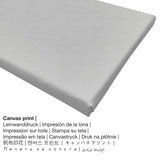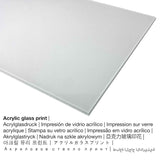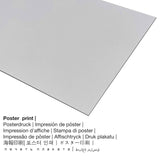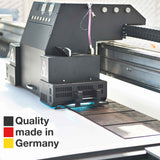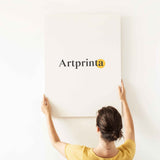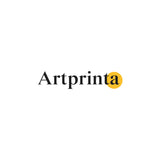Jacobello del Fiore, 1425 - Martyrdom nke Saint Lawrence, ya na ndị nọn Benedictine abụọ - mbipụta nka mara mma.
Ụtụ gụnyere. Mbupu gbakọrọ na ndenye ọpụpụ.
Nchịkọta nke ngwaahịa ebipụta
Ọ bụ ndị kere ihe osise a Italian onye na-ese ihe Jacobello del Fiore in 1425. N'oge a, ihe osise bụ nke nchịkọta Rijksmuseum. Site n'ikike nke - Rijksmuseum (license: public domain).: . Furthermore, alignment of the digital reproduction is in odida obodo usoro ma nwee oke akụkụ nke 2: 1, nke pụtara na ogologo ahụ dị okpukpu abụọ karịa obosara. Jacobello del Fiore was a painter, whose artistic style was mainly Early Renaissance. The Early Renaissance artist lived for 69 years and was born in 1370 na Venice ma nwụọ n'afọ 1439 na Venice.
Ozi nka nka izizi sitere na webụsaịtị ihe ngosi nka (© - Rijksmuseum - www.rijksmuseum.nl)
Jacobello, who had previously worked in various small Italian cities, was among the first to introduce the elegant and brightly coloured ‘International Gothic’ style to Venice. The two kneeling nuns at left, who are witnesses to this scene of martyrdom, would have commissioned the picture for their private devotion; they perhaps belonged to the Venetian convent of San Lorenzo.
Ozi nka ahaziri
| Aha nke eserese ahụ: | "Martyrdom of Saint Lawrence, with Two Benedictine Nuns" |
| Nhazi nka nka: | sere |
| Category: | nka ochie |
| Nhazi oge: | 15th narị afọ |
| Emepụtara n'afọ: | 1425 |
| Ogologo afọ nka nka: | 590 afọ |
| Egosiputara na: | Rijksmuseum |
| Ebe ngosi nka: | Amsterdam, Netherlands |
| Webụsaịtị ihe ngosi nka: | www.rijksmuseum.nl |
| Ikikere nke ihe osise: | ngalaba ọha |
| Site n'aka: | Rijksmuseum |
Tebụl nchịkọta ihe nkiri
| Aha onye nka: | Jacobello del Fiore |
| okike nke onye nka: | nwoke |
| Nationality: | Italian |
| Ọrụ: | onye na-ese ihe |
| Obodo onye nka: | Italy |
| Nhazi nke onye nka: | nna ukwu ochie |
| Ụdị nka: | Renaissance mmalite |
| Nwụrụ anwụ: | 69 afọ |
| Afọ amụrụ: | 1370 |
| Obodo amụrụ: | Venice |
| Nwuru: | 1439 |
| Nwuru na (ebe): | Venice |
Nweta nhọrọ ihe ebipụta nka kacha amasị gị
Anyị na-enye ihe dị iche iche dị iche iche na nha maka ngwaahịa ọ bụla. Họrọ n'ime nhọrọ ngwaahịa ndị a ugbu a ka ị kwekọọ na mmasị gị na nha na akụrụngwa:
- Mpempe akwụkwọ ederede (akwa akwa akwa): The poster is a printed canvas with a slightly rough structure on the surface. It is perfectly appropriate for putting the art copy with a custom frame. Please bear in mind, that depending on the absolute size of the canvas poster print we add a white margin 2-6cm around the artwork, which facilitates the framing with your custom frame.
- Mbipụta nke aluminom: Aluminium Dibond prints are prints on metal with an impressive effect of depth - for a modern impression and a non-reflective surface structure. For our Aluminium Dibond option, we print your favorite artpiece onto the aluminium composite surface. This direct UV print on Aluminum Dibond is one of the most demanded entry-level products and is a truly modern way to showcase art reproductions, since it draws focus on the image.
- Ihe odide acrylic glass: A glossy acrylic glass print, often referenced as a plexiglass print, changes your favorite original into décor and forms a viable alternative to canvas and aluminidum dibond art prints. The work of art is manufactured thanks to state-of-the-art UV direct print machines. The acrylic glass protects your selected art replica against light and heat for several decades.
- Kwaaji: The printed canvas, which shall not be mistaken with a painting on a canvas, is an image applied directly on canvas fabric. It makes the typical effect of three-dimensionality. Hanging your canvas print: The advantage of canvas prints is that they are relatively low in weight, which implies that it is easy to hang the Canvas print without the use of extra wall-mounts. A canvas print is suited for any kind of wall.
Nkọwa ihe ahaziri ahazi
| Nkewa ngwaahịa: | ọrụ mgbidi |
| Usoro mmeputakwa: | dijitalụ mmeputakwa |
| Usoro mmepụta: | mbipụta dijitalụ (Mbipụta UV ozugbo) |
| Production: | German mmepụta |
| Ụdị ngwaahịa: | mmepụta ihe na-achọ |
| Eji ngwaahịa emebere: | Ụlọ ihe ngosi nka, ụlọ mmepụta ihe nka |
| Ndozi onyonyo: | nhazi odida obodo |
| Oke akụkụ onyonyo: | 2:1- ogologo: obosara |
| Ihe: | ogologo ahụ dị okpukpu abụọ karịa obosara |
| Nhọrọ akụrụngwa: | Mbipụta iko acrylic (nke nwere ezigbo mkpuchi iko), mbipụta akwa akwa, mbipụta akwụkwọ mmado (akwụkwọ kwaaji), mbipụta ọla (aluminium dibbond) |
| Mbipụta kanvas (akwa akwa n'elu etiti ihe ndọtị) ụdị nha dị iche iche: | 40x20cm - 16x8 ", 60x30cm - 24x12", 80x40cm - 31x16", 100x50cm - 39x20", 120x60cm - 47x24", 160x80cm - 63x31" |
| Acrylic glass print (nwere ezigbo mkpuchi iko) nhọrọ: | 40x20cm - 16x8 ", 60x30cm - 24x12", 80x40cm - 31x16", 100x50cm - 39x20", 120x60cm - 47x24", 160x80cm - 63x31" |
| Mpempe akwụkwọ mmado (akwụkwọ kwaaji) nha: | 60x30cm - 24x12", 80x40cm - 31x16", 100x50cm - 39x20", 120x60cm - 47x24" |
| Ụdị nha ebipụta aluminom: | 40x20cm - 16x8", 60x30cm - 24x12", 80x40cm - 31x16", 100x50cm - 39x20", 120x60cm - 47x24" |
| Nhazi nke nka nka: | na-enweghị etiti |
Nkwupụta iwu: We try whatever we can in order to describe the art products as clearly as possible and to display them visually on the different product detail pages. Nevertheless, the pigments of the printed materials and the print result can vary marginally from the image on the device's monitor. Depending on your settings of your screen and the quality of the surface, not all color pigments are printed as exactly as the digital version depicted here. Considering that the art reproductions are printed and processed manually, there might also be slight variations in the motif's size and exact position.
© echebe nwebiisinka - Artprinta.com


